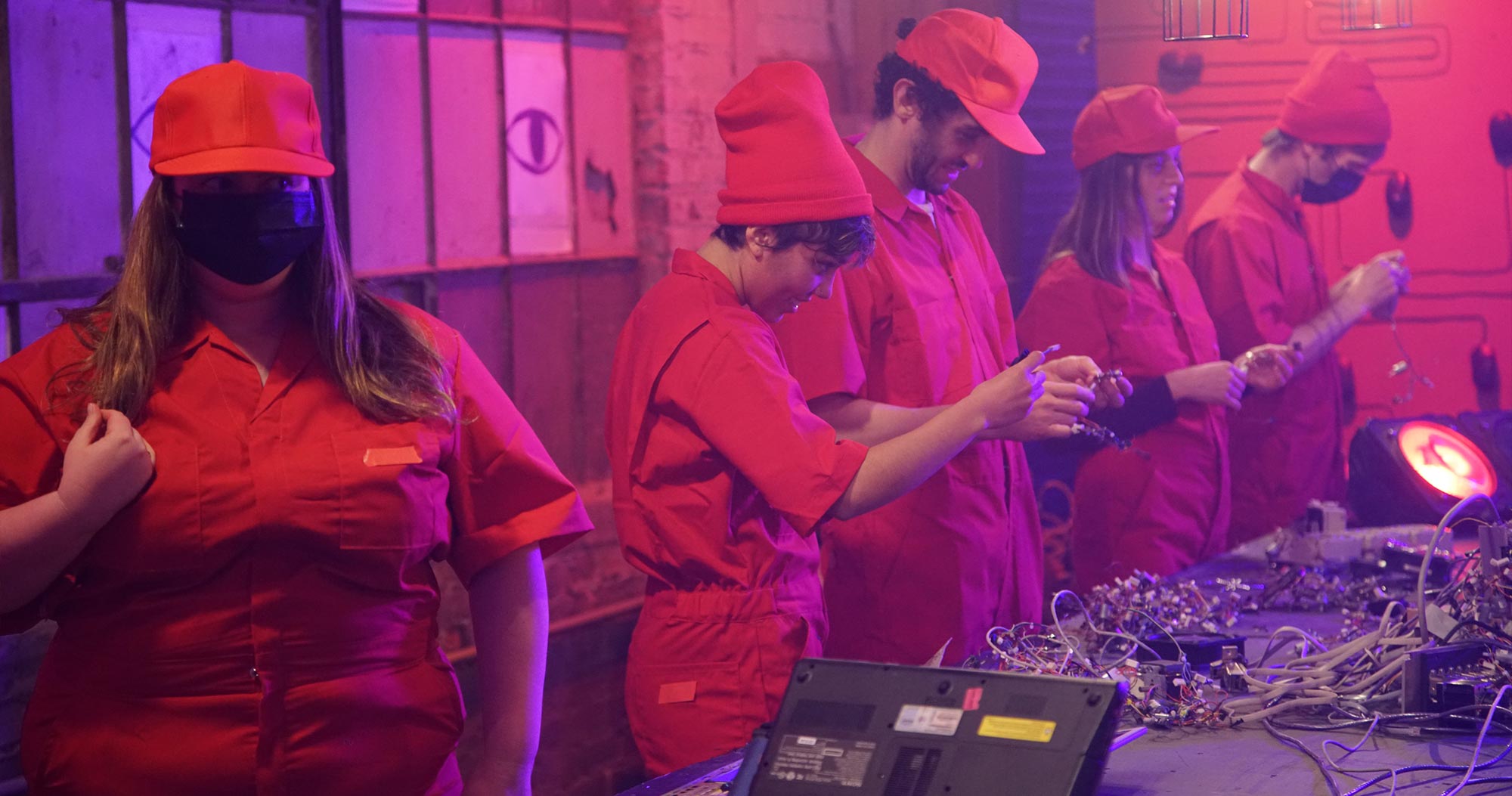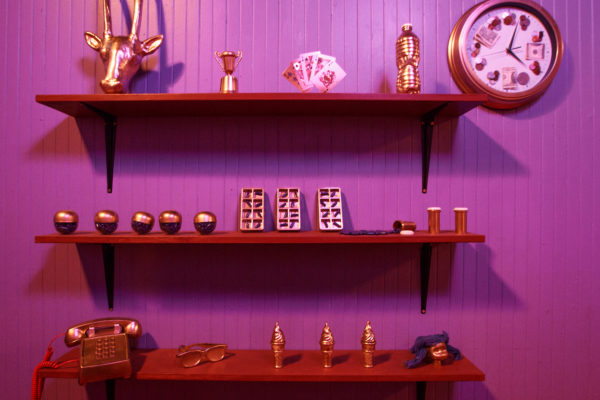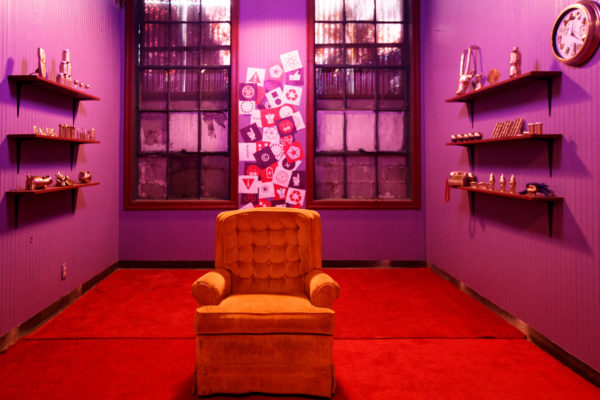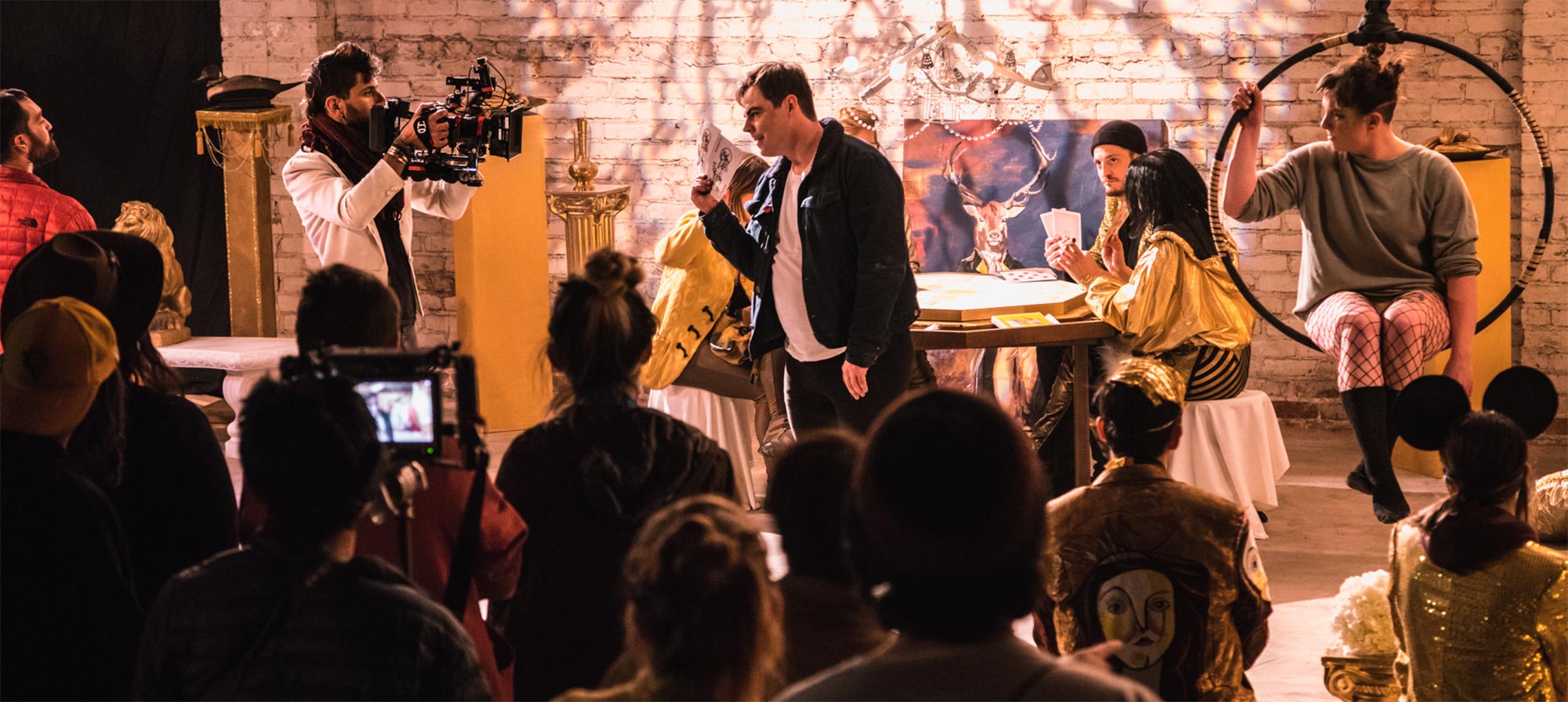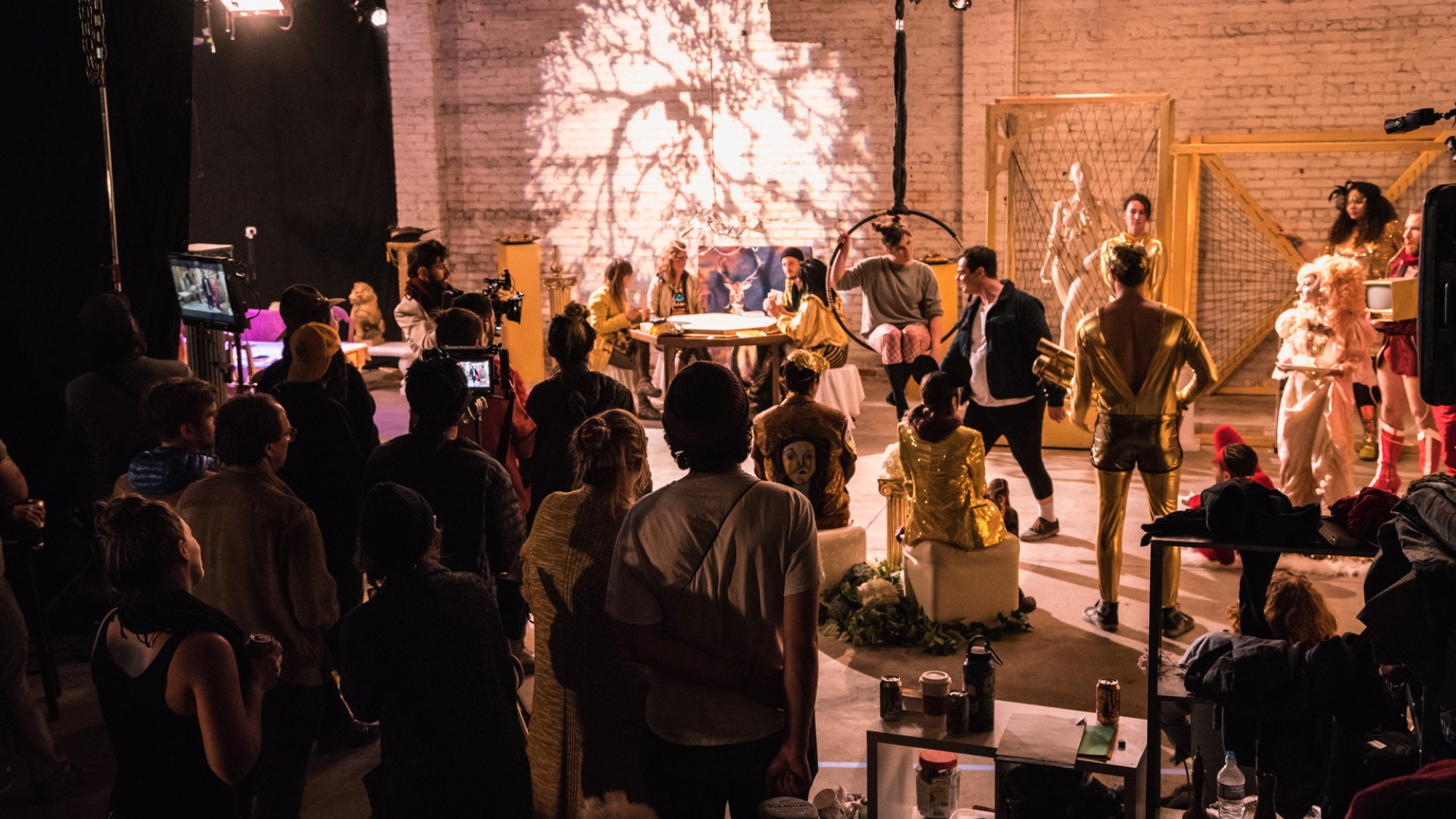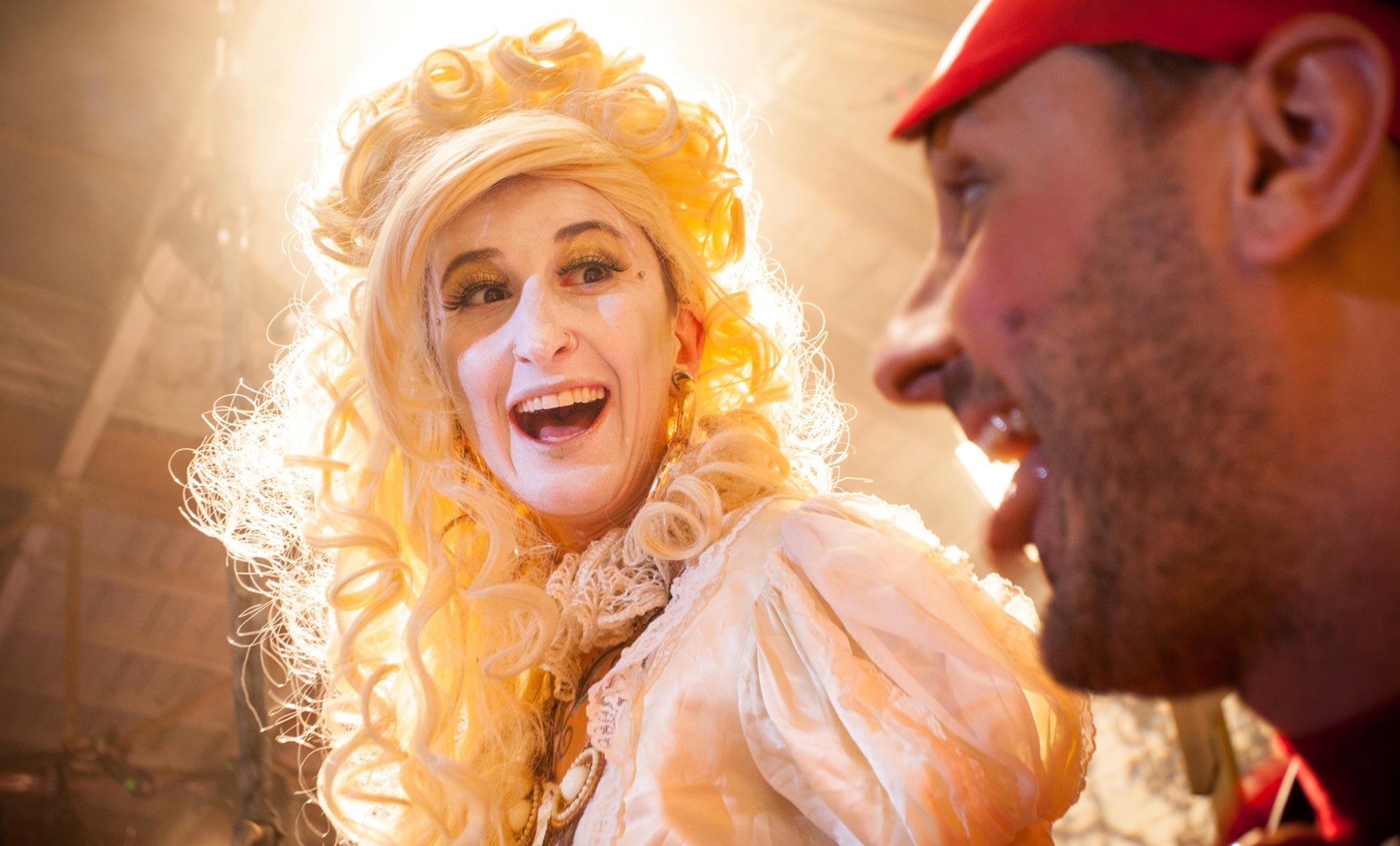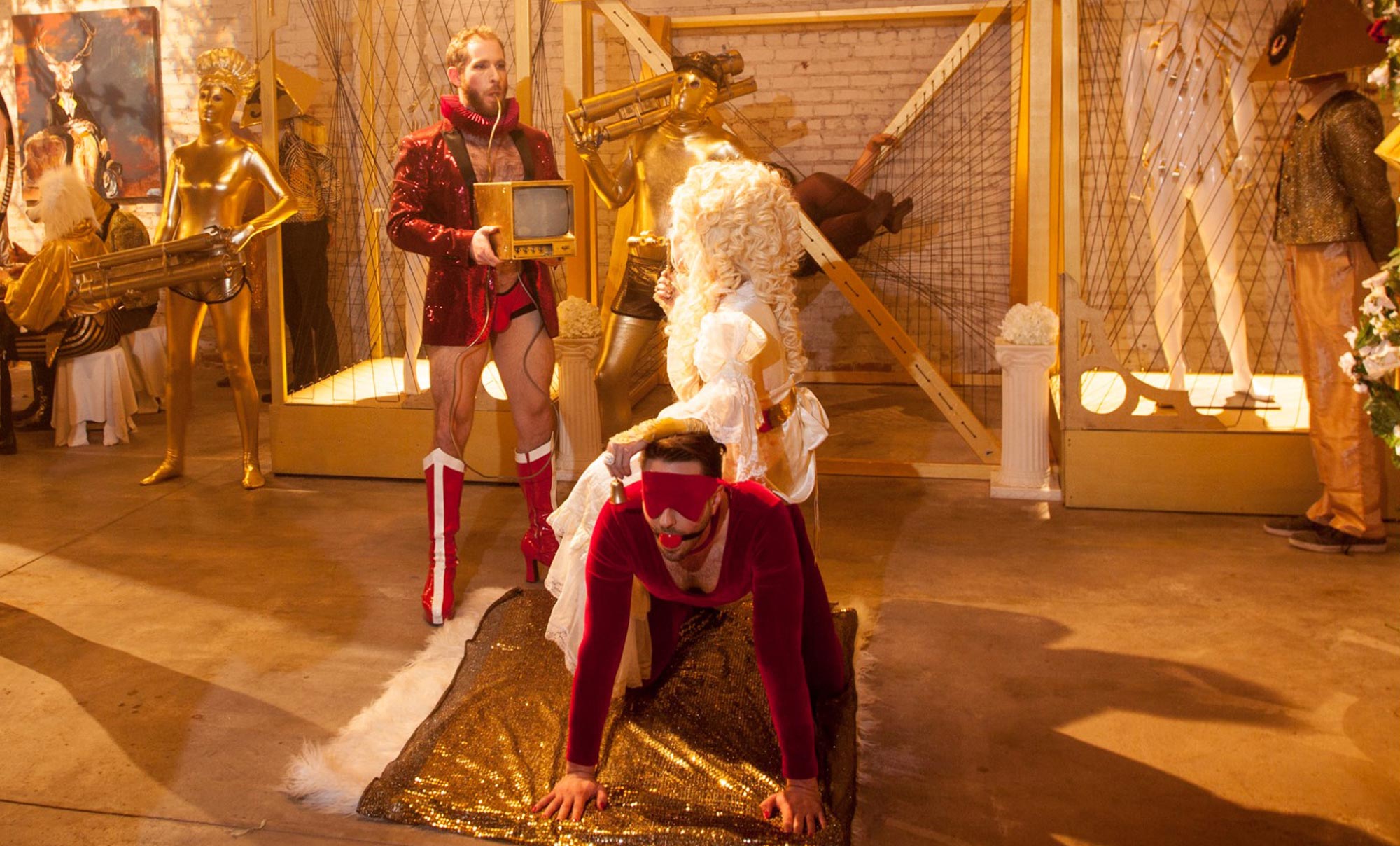
Themes & Motifs
by Mrk Dvs
The world of Strangetown, U.S.A. was collectively designed as an extreme, surrealist vision of western capitalism taken to its logical conclusion. Over 100 artists collaborated to produce “the town”, which was inspired by the GREAT AGAIN album art by Pancho Morris and the Pyramid School.
The album cover features a dysfunctional portrait of power structures in modern America illustrated in the style of isotype, a visual language pioneered by Gerd Arntz, Marie Neurath, and Otto Neurath. The Pyramid portrays over 400 Americans in moments of art-making, activism, and resistance, including dozens of historical figures as well as 50+ members of the East Bay artistic community.
To bring the pyramid to life, over a dozen teams of visual and immersive artists produced 13 vignettes, capturing and deciphering some of the revolutionary messages hidden in the cover. For over a month, we occupied a warehouse in Oakland, 30 West Studios, building within it the abstraction of a town that felt more real and no less strange than the world outside its walls.

As in America, Strangetown is ruled by a tiny elite (the Gold People) that oversee a cruel, Orwellian corporate monoculture which keeps its permanent underclass (the Red People) in perpetual servitude. The Red People make, while the Gold People take. In a plot to achieve limitless freedom and total control, they privatize profits and socialize losses until the society of Strangetown stratifies to its breaking point. When a charismatic (though ultimately villainous) hero enters the arena as the Red People’s champion, they exact a strange brand of justice and revenge.


One overarching theme of Strangetown is detachment. People have become disconnected from the food they eat, the products they buy, the people they elect, the information they trust, the values they believe. Most of all, we’ve become disconnected from ourselves and our fellow human beings. With Strangetown, we wanted to create a narrative that would encourage people to break the walls around them. It serves as a cautionary tale for those who use their resources to keep their hands on the levers of power.
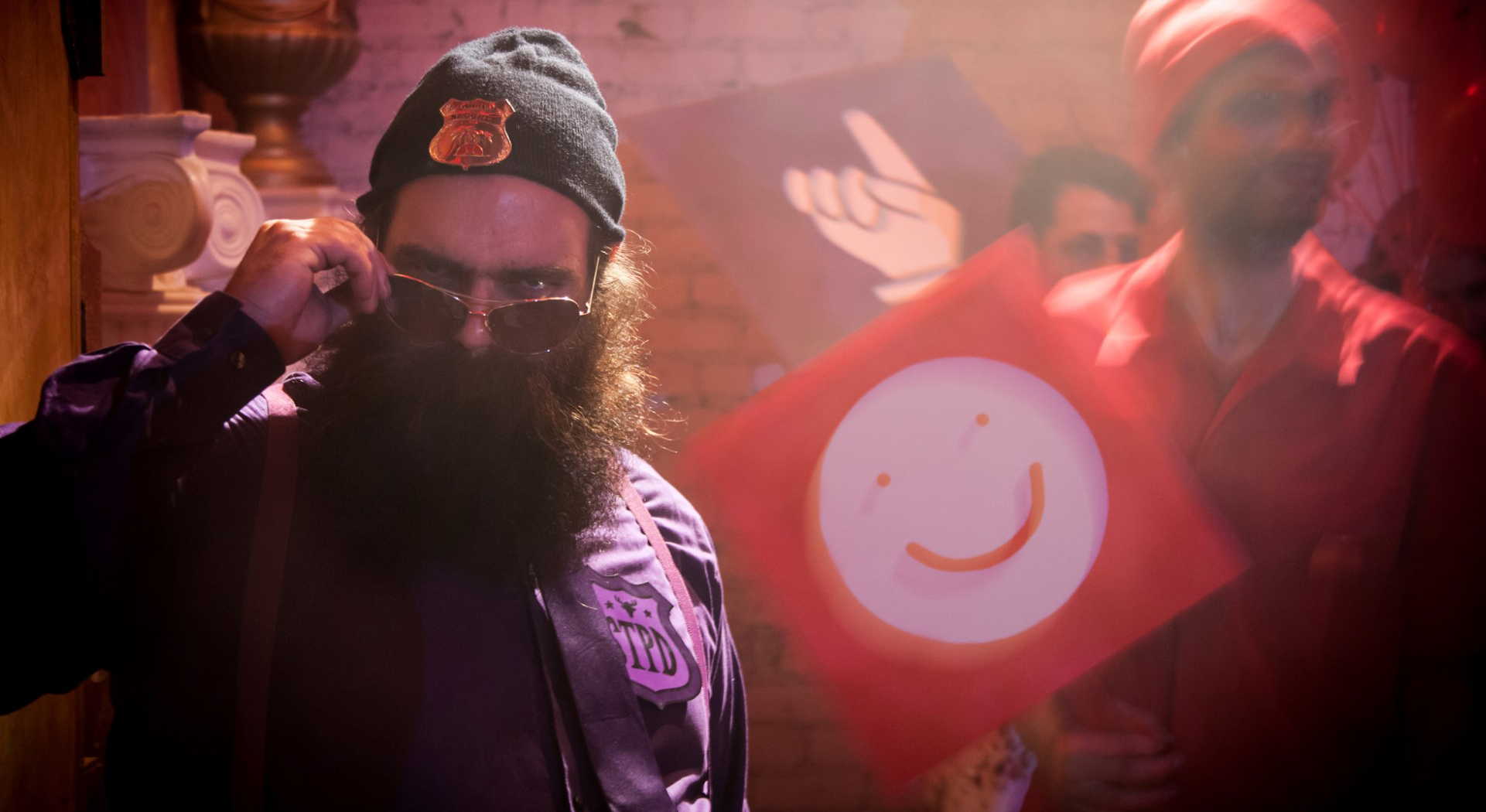
In each moment between Pancho’s phone call and his toast to power, we explore our own world through a twisted prism. There’s a lot to unpack here, and it can be easy to get lost without a guide, so to begin your journey, let’s step into the Red World.


